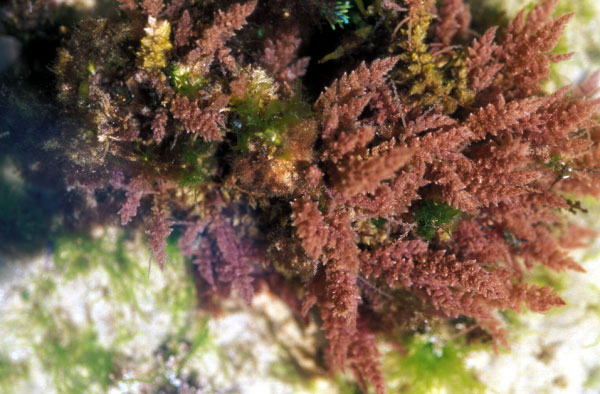Falkenbergia rufolanosa Harvey
Pale purplish-red, quickly degenerating when removed from the water and becoming distinctly orange; fronds bushy, with a cylindrical axis to1 mm wide and 200 mm long. Both phases readily reproduce vegetatively. Photographs by M.D. Guiry

The Key Ingredient in These Hot Sauces, Gins, and Jerky? It’s Seaweed
It’s rare to get good news from the sea. Water temperatures are rising, fish stocks are being depleted, and the fish we do eat are increasingly full of microplastics. But the oceans do hold one positive portent: Seaweed. It’s regenerative — it can grow about a foot a day — and carbon and nitrogen sequestering. Research suggests that, per acre, it can absorb more than 20 times as much carbon dioxide as a forest. In the U.S. and Canada, entrepreneurs are cultivating it and other macro algae for everything from kelp jerky to capsules containing shots of Glenlivet.
These companies have ambitious plans to grow in 2020, taking up more and more space on shelves and cleaning up more and more oceans. “We are eyes on the blue green economy,” says Chelsea Briganti, chief executive officer of utensil maker Loliware. “Seaweed represents an opportunity everywhere you look.”


